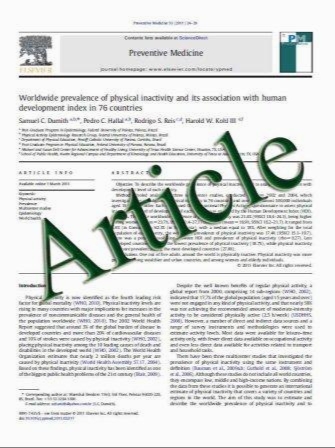Evaluation of spinal mobility measurements in predicting axial psoriatic arthritis
- نوع فایل : کتاب
- زبان : انگلیسی
- مؤلف : Ying-ying Leung & Kwok Wah Ho & Lai Shan Tam & Tracy Y. Zhu & Lai W. Kwok & Tena K. Li & Emily W. Kun & Edmund K. Li
- چاپ و سال / کشور: 2011
Description
Axial psoriatic arthritis (PsA) represents a more severe form of disease than peripheral PsA. We evaluate the usefulness of various spinal mobility measurements in predicting a radiographically defined axial PsA. A crosssectional study on PsA patients with spinal mobility measurement performed. PsA were classified to axial or peripheral PsA by the presence of sacroiliitis. Three Bath Ankylosing Spondylitis Metrology Indexes (BASMIs) were calculated. The sensitivity, specificity, and area under receiver operator curves (AUC) of each spinal mobility measurement in prediction of axial PsAwere analyzed. A total of 125 subjects studied (males 52%) with mean age and duration of illness of 47.5±12.4 and 9.2±6.7 years. Twenty-nine patients (17 males and duration of illness 12 females) had axial PsA. Axial PsA patients had longer disease duration (p=0.05) and more limitation in spinal mobility. Axial PsA patients had higher inflammatory markers and a trend towards poorer global health, higher damaged joint count, and poorer physical function. The tragus-to-wall distance, modified schober test, and lumber side flexion had good sensitivity and specificity in predicting axial PsA. In the logistic regression model, the lumbar side flexion (OR 0.82, 95% CI 0.72–0.92) was independently associated with axial PsA. All three sets of composite scores BASMI2, BASMI10, and BASMI lin had good prediction for axial PsA (AUC 0.619, 0.626, and 0.618). Spinal mobility measurements and BASMI were useful in differentiating axial and peripheral PsA. Lumber side flexion and modified schober test best differentiate axial and peripheral PsA.
Clin Rheumatol Received: 11 August 2010 / Revised: 15 January 2011 / Accepted: 10 February 2011


